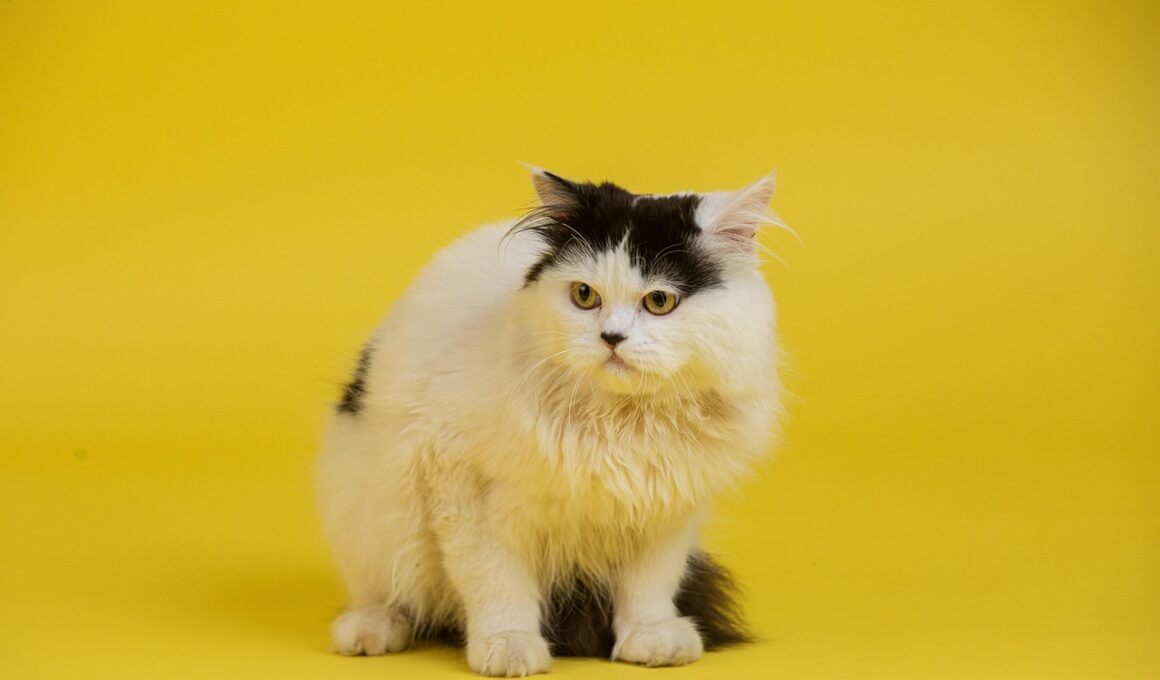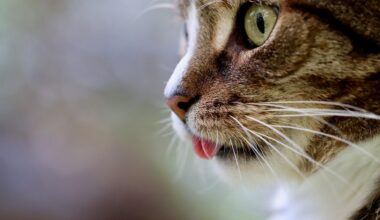Understanding the Coat Needs of Persian Cats
Persian cats are renowned for their luxurious, flowing coats. Their thick fur, while beautiful, also requires regular grooming to maintain its health and prevent matting. Grooming not only enhances their appearance but also gives an opportunity to check for any skin issues. Regular brushing, ideally daily, is essential to remove loose hairs and prevent hairballs. As these cats have a double coat, using a combination of grooming tools, like a slicker brush and a wide-toothed comb, can be particularly effective. Long-haired breeds like Persians are prone to tangles, especially around the neck and underbelly. Additionally, owners should ensure they are comfortable with the process to keep their cats calm during grooming sessions. Bathing, while not required frequently, can occasionally be beneficial. A cat-safe shampoo can help in managing their coat’s cleanliness. Beware of bathing too often as it can strip natural oils from their skin. Regular grooming sessions also serve as a bonding time between owner and feline. Keeping your Persian’s coat in pristine condition reflects their overall health and well-being. Grooming is not just maintenance; it’s a vital part of owning a Persian cat.
The Importance of Grooming Tools
Having the right grooming tools is critical for maintaining the coat of Persian cats. Investing in high-quality brushes is essential, as they can effectively manage the thick fur. One should primarily use a slicker brush, which helps to detangle any knots and remove loose hair. Additionally, a wide-toothed comb is invaluable for dealing with stubborn mats. Regular use of these tools can prevent matting, ensuring the coat remains lush and healthy. For those who wish to keep the fur short, grooming clippers designed specifically for cats can be a time-saver. Also, nail clippers and grooming scissors should not be overlooked in a grooming kit. These tools are crucial for maintaining the cat’s overall appearance and health. It’s important to check the condition of your grooming tools regularly, as dull blades can cause discomfort during grooming. Regularly cleaning brushes and combs can help to prevent the spread of any skin issues. By employing these tools correctly, owners can create a comfortable grooming routine. A knowledgeable approach to grooming tools will only benefit your Persian cat’s grooming regimen long-term, ensuring a healthy and happy feline.
Another crucial element in grooming Persian cats is recognizing the specific grooming routines they need. Unlike some other breeds, these cats require frequent coats’ derangement to keep their fur mat-free. Therefore, owners should also be attentive to areas more prone to tangling. For instance, the armpits and behind the ears are hotspots where fur can easily become matted. Having a dedicated grooming schedule can help in preemptively managing these issues. That being said, the grooming routine should be a pleasant experience rather than a chore. Using treats or toys during grooming can motivate these cats to cooperate more willingly. It’s also vital to familiarize them with the grooming tools when they are still young, as this promotes a sense of comfort with the process. Furthermore, always monitor their reaction to grooming, as signs of discomfort can indicate an issue that requires immediate attention. If you see excessive scratching or changes in coat condition, it could be a sign of an underlying problem. With time spent grooming, your Persian will likely bond more deeply with you, enhancing trust and reducing anxiety.
Bathing Your Persian Cat
Bathing is another important aspect of grooming Persian cats. While not necessary every week, occasional baths with cat-specific shampoos can help keep their coats clean and free from oils. Regularly assessing the cat’s coat can show when it might be necessary to give a bath. If you notice that the coat is losing its luster or has an unusual smell, it might be time for a wash. However, it’s essential to use lukewarm water and avoid getting water in their ears to prevent infections. Prior to bathing, ensure you thoroughly brush your cat to remove any tangles and mats, as wet fur can exacerbate these issues. Once the bathing process is complete, thoroughly dry them with a towel or a pet-safe hair dryer on a low setting. Some cats may even enjoy this experience if introduced gradually and positively. Remember that keeping the bathing experience short and stress-free is vital. As a general rule, assess your Persian’s comfort with water, as each cat is unique. Maintaining cleanliness is an essential component of grooming and ultimately affects the overall health of your fluffy companion.
Managing the ear care of Persian cats is another aspect that comes with grooming. Their long fur makes them susceptible to ear issues, so regular checks are crucial. Gently inspecting the inside of their ears helps identify possible problems early on, such as wax buildup or infections. If you notice excessive dirt or a foul odor, consult a veterinarian for appropriate solutions. Cleaning should be done cautiously using cotton balls moistened with ear cleaner made for cats. Avoid inserting anything deep into the ear canal, as this could cause injury. Furthermore, it’s essential to keep an eye on the cat’s eyes, as Persians are prone to tear staining. Using designated wipes can help keep their face clean and reduce any staining. During grooming sessions, it’s necessary to check the eyes for any irritations, and consult a vet if any issues arise. Regularly clipping excessive hair around the eyes can also minimize tear staining. Overall, being organized in your grooming approach ensures that your Persian remains in excellent shape, nurturing not only a beautiful coat but also enhancing overall health through vigilant care.
Monitoring Skin Health
Being attentive to your Persian cat’s skin health is a major part of grooming responsibilities. Persian cats may suffer from various skin conditions that could affect their fur’s sheen and robustness. Regular grooming provides the opportunity to inspect the skin for any abnormalities, bumps or changes in texture. Identifying fleas or skin irritations promptly can ensure that any necessary treatments can be applied. It is vital to monitor for excessive shedding, as it could point toward underlying health issues. Ensuring your cat is on a balanced diet rich in omega fatty acids promotes healthy skin and coat growth. The environment can also influence skin conditions; drying heat or humidity can exacerbate problems. Moreover, it’s ideal to minimize stress in your cat’s surroundings, as stress can lead to skin conditions or excessive grooming behaviors. If you notice anything unusual, contacting a veterinarian is advisable for expert guidance. Regular grooming serves not just to beautify but also to ensure the health of the skin and coat. Therefore, owners should integrate skin checks into each grooming session to promote overall wellness.
Finally, from a behavioral standpoint, implementing rewards and positive reinforcement during grooming is highly effective in ensuring cooperation from Persian cats. Many Persian cats are sensitive and may dislike the grooming process if not approached correctly. Offering treats or praise during and after grooming sessions can create a more enjoyable experience for both the cat and the owner. Early introduction to grooming can build a healthy relationship with this routine. Socialization during kitten stages allows exposure to the grooming routine and can reduce anxiety later on. To build a bond with your Persian cat, incorporate gentle and soothing verbal communication. Always be attentive to your cat’s body language; if it shows signs of distress, it may be time to break for a while. Continuous grooming rather than sporadic endeavors will set a consistent expectation for them. Moreover, being patient and adapting to your cat’s comfort level will yield a more favorable outcome in the long run. The end goal of grooming is to ensure not just physical health but also mental well-being by helping your Persian cat feel secure during these sessions.
In conclusion, grooming Persian cats consists of several aspects that promote their overall well-being. Owners should be diligent in maintaining a consistent grooming schedule that includes brushing, bathing, and monitoring for skin conditions. Having the right tools is crucial, ensuring comfort not only for the cat but also creating a pleasant experience for the owner. With the proper techniques, grooming can become a cherished bonding time rather than a chore. Routine checks of areas prone to matting and general health can prevent issues of discomfort. It is also essential to recognize that while grooming, an attention to both the skin and coat health will yield a happy and healthy Persian. Remember that each cat has unique needs and preferences, which should be taken into consideration. Using thoughtful approaches in grooming will not only ensure your Persian looks their best but also enhances their quality of life. By incorporating patience and positivity into the routine, owners can transform grooming into a rewarding experience for both themselves and their furry friend. Treat grooming as an opportunity for connection, leading to a trusting and lasting companionship with your Persian cat.


